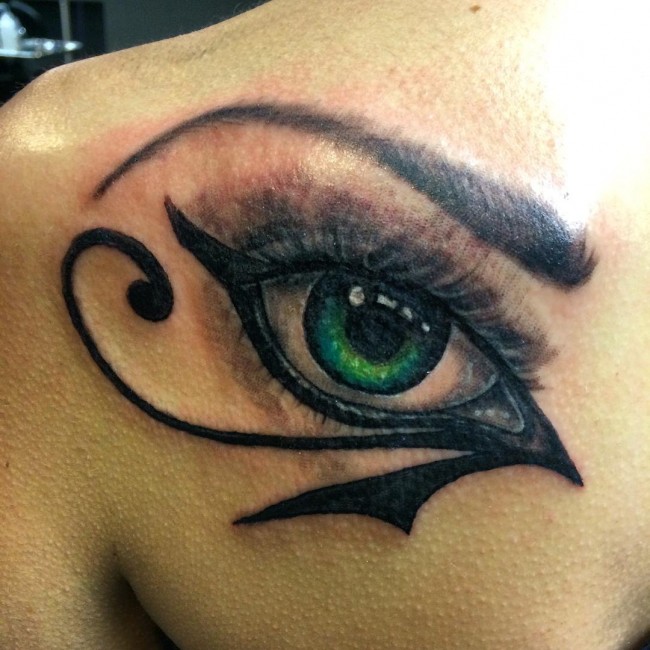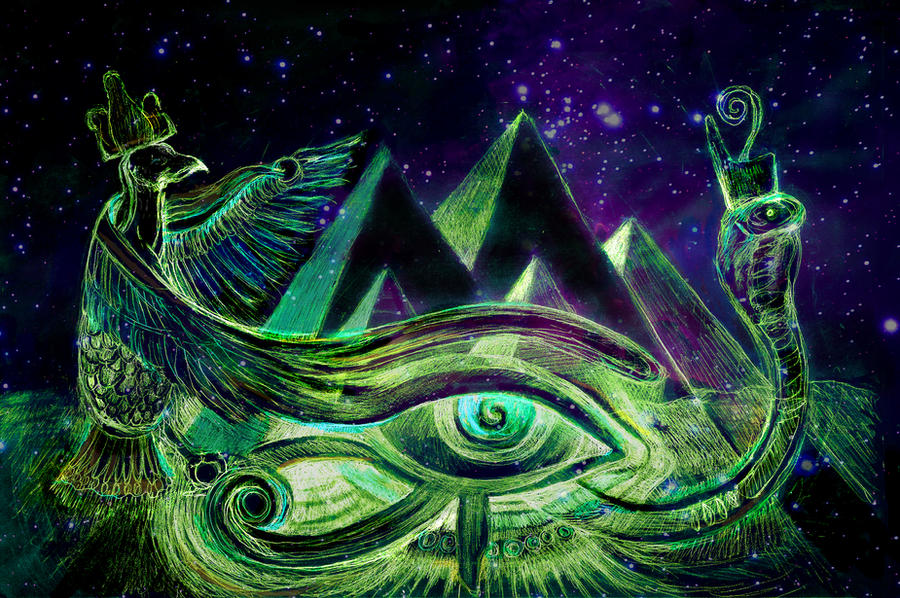In the realm of ancient Egyptian mythology, few symbols are as captivating and enigmatic as the “Eye of Ra.” This powerful emblem has intrigued historians, archaeologists, and enthusiasts for centuries. In this article, we will delve into the depths of this ancient symbol, exploring its significance, origins, and enduring legacy. Prepare to embark on a journey through time, as we uncover the mysteries of the Eye of Ra.
Key Takeaways
- The Eye of Ra is a prominent symbol in ancient Egyptian mythology, associated with the sun god Ra.
- It represents protection, power, and royal authority, often depicted as a fierce, watchful eye.
- The Eye of Ra is distinct from the Eye of Horus, although both share similar attributes.
- Understanding the Eye of Ra offers insights into ancient Egyptian culture, religion, and art.

The Origins of the Eye of Ra

The Eye of Ra is deeply rooted in ancient Egyptian mythology, where it is closely associated with the sun god Ra. Ra was one of the most significant deities in the Egyptian pantheon, revered as the creator of all life and the ruler of the heavens. The Eye of Ra, often depicted as a right eye, symbolizes Ra’s all-seeing nature and his ability to watch over and protect his creation.
The Eye as a Symbol of Power
In ancient Egyptian culture, the Eye of Ra was more than just a symbol; it was a representation of divine power and authority. The eye was believed to possess the ability to ward off evil and bring forth blessings. It was often used in amulets and jewelry to provide protection to the wearer, serving as a potent talisman against malevolent forces.
Mythological Tales and Symbolism
The Eye of Ra is frequently featured in mythological narratives that highlight its protective and destructive powers. One such tale involves the goddess Sekhmet, who is often depicted as the fierce, lion-headed manifestation of the Eye of Ra. According to legend, Ra sent Sekhmet to punish humanity for their disobedience. However, her wrath was so great that it threatened to annihilate all life. To prevent this, Ra tricked Sekhmet into drinking a concoction that pacified her, transforming her into the more benevolent goddess Hathor.
The Eye of Ra vs. The Eye of Horus
While the Eye of Ra and the Eye of Horus are often confused, they are distinct symbols with different meanings. The Eye of Horus, also known as the “Wadjet,” is associated with the sky god Horus and symbolizes healing and protection. Unlike the Eye of Ra, which is linked to the sun, the Eye of Horus is connected to the moon and is typically depicted as a left eye.
Both eyes share the common theme of protection, but their mythological contexts and symbolic representations differ. The Eye of Ra embodies the sun’s destructive and protective powers, while the Eye of Horus is more closely tied to restoration and health.
The Cultural Legacy of the Eye of Ra
The Eye of Ra’s influence extends far beyond ancient Egypt. As a powerful symbol of protection and authority, it has been adopted by various cultures and continues to captivate the modern imagination. Its imagery can be found in contemporary art, jewelry, and even popular media, where it often represents mystery and ancient wisdom.

Art and Architecture

In ancient Egyptian art and architecture, the Eye of Ra was a common motif. Temples and tombs were often adorned with depictions of the eye, serving as a reminder of Ra’s divine presence and protection. This symbol was not only a religious icon but also an integral part of the cultural and artistic identity of ancient Egypt.
Modern Interpretations
Today, the Eye of Ra continues to inspire artists, writers, and filmmakers. Its enigmatic nature and rich symbolism make it a popular subject in literature and visual arts. The eye’s association with protection and power resonates with modern audiences, who often seek to incorporate its essence into their lives through tattoos, jewelry, and other forms of personal expression.
The Enduring Mystery of the Eye of Ra
The Eye of Ra remains a fascinating subject of study and interpretation, offering a glimpse into the complex belief systems of ancient Egypt. Its dual nature as a symbol of protection and destruction reflects the intricate balance of forces revered by the ancient Egyptians. As we continue to explore the mysteries of the past, the Eye of Ra stands as a testament to the enduring power of ancient symbols and their ability to captivate the human imagination.
Whether you are a history enthusiast, a lover of mythology, or simply intrigued by ancient symbols, the Eye of Ra offers a wealth of knowledge and inspiration. Its legacy endures, inviting us to delve deeper into the mysteries of the ancient world and uncover the timeless truths that lie within.